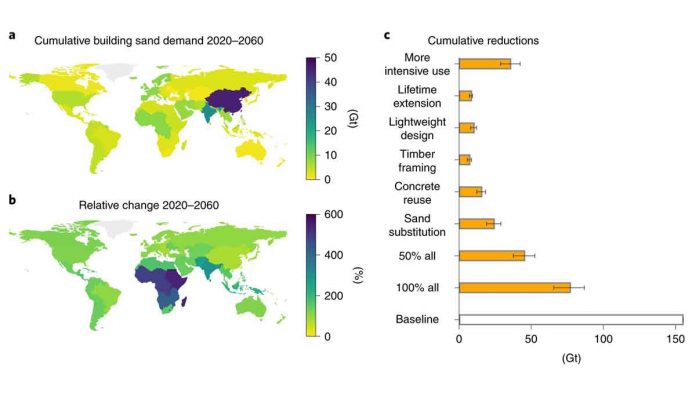Leiden University researchers have attempted to measure the demand for sand in the coming decades. They have also outlined ways to prevent a demand crisis. The study was published in the journal Nature Sustainability. Scientists described their approach to estimating sand demand. They also outlined ways to reduce it using material efficiency strategies to avert a crisis. Scientists have published a News & Views piece in the same journal issue outlining the types of material efficiency strategies. These can be used to reduce sand demand and the work done by the team in the Netherlands.
Calculating global sand demand
There is a sand supply crisis developing as demand has begun to outstrip the amount that can be produced. Sand is used to make asphalt, concrete, silicon chips, glass and a wide variety of other products. There is ample sand in the environment, like the massive dunes in the Sahara Desert. But most of it is unsuitable for industrial use. Most usable sand is taken from river beds.
The supply crisis has developed to the point where sand pirates have begun destroying small islands in places like Indonesia. As they excavate all of the available sand. Scientists said, the problem is going to get even worse if action is not taken very soon. Scientists conducted a survey of buildings at 26 sites around the world, to find out how serious the sand supply crises might become.
They used the data from their survey with data describing expected population increases and economic growth. They create models for use in creating estimates for glass and concrete global demand for the years leading up to 2060. They find demand for sand is likely to jump from 3.2 billion metric tons a year in 2020 to 4.6 billion metric tons in 2060.
They acknowledge that it is not known how much sand there is in natural reserves. They suggest there is likely to be a major shortfall based on current supply and demand issues. They also say that there are ways to avoid such a crisis by using material efficiency strategies. This includes increasing building lifetimes, recycling concrete, using lighter materials in buildings where possible and designing buildings in ways that use less concrete.

